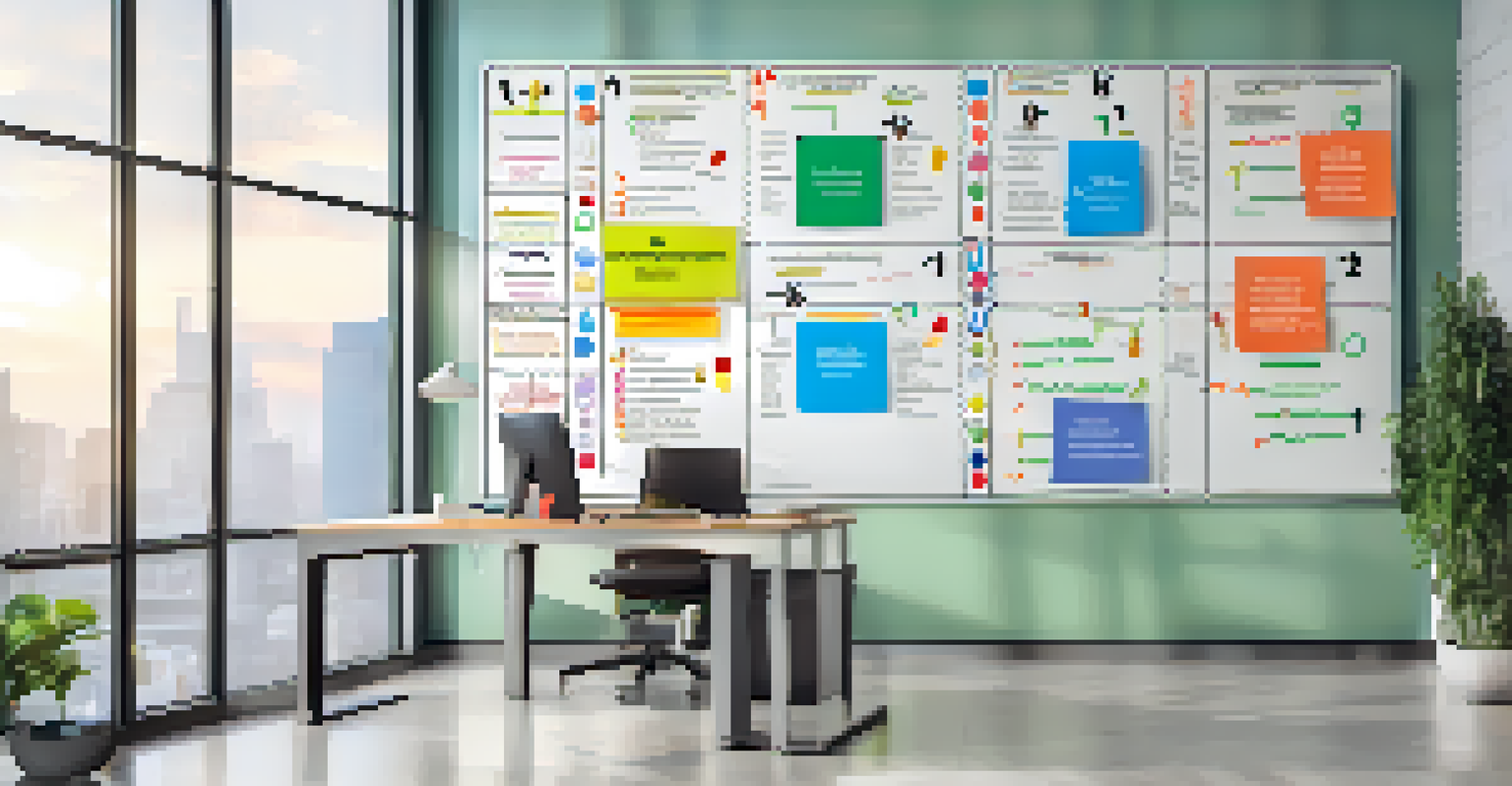Prioritizing Risks: Frameworks for Effective Decision Making

Understanding Risk: What It Means for Decision Making
Risk, in its simplest form, refers to the potential for loss or harm. In decision-making, understanding risk is crucial because it helps us weigh the possible consequences of our choices. Whether you're a business leader or managing a personal project, identifying risks allows you to prepare and strategize effectively.
In a world where change is the only constant, risk management is essential for navigating uncertainty and making informed decisions.
For example, consider launching a new product. The risks could include market demand, production costs, or potential competition. By assessing these risks, you can make informed decisions rather than relying on gut feelings alone.
Ultimately, recognizing and prioritizing risks empowers you to navigate uncertainties and make choices that align with your goals.
The Importance of Risk Prioritization in Decision Making
Prioritizing risks means determining which risks require immediate attention and which can be monitored over time. It’s essential because resources—time, money, and manpower—are often limited. By focusing on the most significant risks, you can allocate your resources more effectively.

Think of risk prioritization like a firefighter responding to an emergency. They first address the most dangerous fire, ensuring safety before tackling smaller flames. Similarly, by addressing high-priority risks, you enhance your decision-making process, resulting in better outcomes.
Understanding Risk in Decisions
Recognizing and assessing risks is essential for making informed choices that align with your goals.
Thus, prioritizing risks not only safeguards your project but also boosts confidence in your decision-making capabilities.
Common Risk Assessment Frameworks to Consider
There are several frameworks available to help you assess and prioritize risks. Popular options include the Risk Matrix, Failure Mode Effects Analysis (FMEA), and the SWOT analysis. Each of these frameworks offers a structured way to evaluate risks based on their likelihood and impact.
The greatest risk is not taking one. In a world that is changing really quickly, the only strategy that is guaranteed to fail is not taking risks.
For instance, the Risk Matrix allows you to categorize risks on a grid, making it easy to visualize which risks are critical and which are less concerning. This visual approach can simplify complex decisions, especially when multiple stakeholders are involved.
By employing these frameworks, you can streamline your risk assessment process, leading to clearer and more effective decision-making.
How to Implement a Risk Prioritization Framework
Implementing a risk prioritization framework begins with identifying potential risks related to your project or decision. Gather input from various stakeholders to ensure a comprehensive understanding of the landscape. Once identified, categorize the risks based on their likelihood and impact.
Next, use a chosen framework to map out these risks visually. This step creates a clear picture of which risks are most pressing and need immediate action. It also facilitates conversations among team members about the best strategies for mitigation.
Prioritize Risks for Better Focus
Focusing on high-priority risks allows for more effective resource allocation and improved decision-making outcomes.
With a structured approach, you’ll find that decision-making becomes more straightforward, and you’ll feel more confident in addressing the risks that matter most.
Evaluating the Impact of Risks on Decision Outcomes
Understanding the impact of risks is vital for informed decision-making. Each risk carries potential consequences that can significantly affect your outcomes. Evaluating these impacts helps prioritize which risks to address first.
For example, a small financial risk might seem less pressing than a reputational risk that could damage customer trust. By evaluating these impacts, you can prioritize effectively, ensuring that your decisions align with your long-term goals.
Ultimately, this evaluation not only guides your immediate actions but also shapes your overall strategy moving forward.
Continuous Monitoring: Adapting to Evolving Risks
Risk management is not a one-time exercise; it requires continuous monitoring and adaptation. As conditions change—be it market dynamics, regulatory shifts, or internal changes—new risks may emerge while existing ones may diminish. Staying vigilant ensures that your risk prioritization remains relevant.
For instance, during a product launch, initial risks may shift as customer feedback rolls in. Adjusting your risk assessment in real-time allows you to make timely decisions that can optimize outcomes.
Continuous Monitoring is Key
Ongoing risk assessment ensures that decision-making adapts to changing circumstances and remains relevant.
By maintaining a proactive stance on risk, you can adapt your strategies and ensure long-term success.
The Role of Communication in Risk Management
Effective communication is crucial in risk management. Engaging stakeholders and team members in discussions about risks fosters a culture of transparency and collaboration. When everyone understands potential risks, they can contribute to identifying solutions and strategies.
Consider regular risk assessment meetings as a platform for sharing insights and updates. This practice not only keeps everyone informed but also encourages diverse perspectives that can lead to innovative solutions.

In essence, open communication regarding risks enhances collective decision-making, ensuring that your team is aligned and prepared to tackle challenges together.